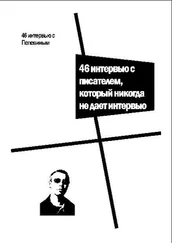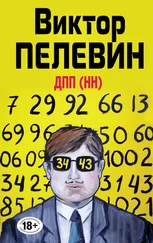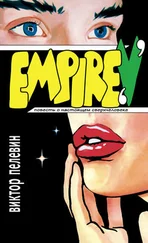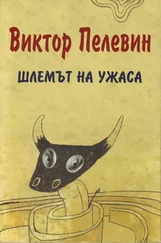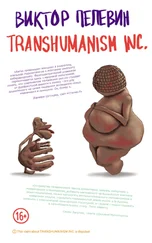Виктор Пелевин - Buddha's Little Finger
Здесь есть возможность читать онлайн «Виктор Пелевин - Buddha's Little Finger» весь текст электронной книги совершенно бесплатно (целиком полную версию без сокращений). В некоторых случаях можно слушать аудио, скачать через торрент в формате fb2 и присутствует краткое содержание. Жанр: Современная проза, на английском языке. Описание произведения, (предисловие) а так же отзывы посетителей доступны на портале библиотеки ЛибКат.
- Название:Buddha's Little Finger
- Автор:
- Жанр:
- Год:неизвестен
- ISBN:нет данных
- Рейтинг книги:5 / 5. Голосов: 1
-
Избранное:Добавить в избранное
- Отзывы:
-
Ваша оценка:
- 100
- 1
- 2
- 3
- 4
- 5
Buddha's Little Finger: краткое содержание, описание и аннотация
Предлагаем к чтению аннотацию, описание, краткое содержание или предисловие (зависит от того, что написал сам автор книги «Buddha's Little Finger»). Если вы не нашли необходимую информацию о книге — напишите в комментариях, мы постараемся отыскать её.
Buddha's Little Finger — читать онлайн бесплатно полную книгу (весь текст) целиком
Ниже представлен текст книги, разбитый по страницам. Система сохранения места последней прочитанной страницы, позволяет с удобством читать онлайн бесплатно книгу «Buddha's Little Finger», без необходимости каждый раз заново искать на чём Вы остановились. Поставьте закладку, и сможете в любой момент перейти на страницу, на которой закончили чтение.
Интервал:
Закладка:
‘Excuse me, gentlemen,’ I said, unable to restrain myself, ‘to whom do these drawings on Japanese themes belong?’
‘Semyon.’ said Volodin, ‘who do your drawings belong to? The hospital, I suppose?’
‘Are they yours, Mr Serdyuk?’
‘Yes,’ answered Serdyuk, glancing sideways at me with his bright blue eyes.
‘Quite exquisite,’ I said. ‘Only, perhaps, rather sombre.’
He gave no answer.
The third series of drawings, which I guessed must be those of Volodin, was very abstract and impressionistic in manner. Here also there was a leitmotif - three dark blurred silhouettes around a burst of flame, with a broad beam of light falling on them from above. In compositional terms it was reminiscent of a well-known Russian painting of three hunters sitting round a camp-fire, except that in this work it was a high-explosive shell that had exploded in the flames just a moment before.
I looked over at the other wall and started violently in surprise.
It was probably the most acute attack of deja vu I have ever suffered in my life. From my very first glance at the six-foot-long sheet of cardboard, covered with its tiny figures in various colours, I sensed a profound connection with the strange object. I rose from my chair and went across to it.
My gaze fell on the upper part of the sheet, which showed something like the plan of a battle, in the way they are usually drawn in history textbooks. At its centre was a solid blue oval, where the word ‘SCHIZOPHRENIA’ was written in large letters. Approaching it from above were three broad red arrows; one ran directly into the oval and the two others curved round to bite into its sides. Written on them were the words ‘insulin’, ‘aminazine’ and ‘sulphazine’, and running down from the oval in a broken line was a blue arrow, beneath which were the words ‘illness retreats’. I studied this plan and then turned my attention to the drawing below it.
With its numerous characters, abundant detail and crowded composition it reminded me of an illustration to Tolstoy’s War and Peace - one including all of the novel’s characters and the entire scope of its action. At the same time the drawing was very childish in nature, because it broke all of the rules of perspective and common sense, exactly like a child’s drawing. The right-hand section of the drawing was occupied by a representation of a big city. When I spotted the bright yellow dome of St Isaac’s, I realized that it must be St Petersburg. Its streets, in some places drawn in detail and in others merely represented by simple lines, as though on a map, were filled with arrows and dotted lines which clearly represented the trajectory of someone’s life. From St Petersburg a dotted line led to a similar image of Moscow which was close beside it. In Moscow only two places were represented in real detail - Tverskoi Boulevard and the Yaroslavl Station. Leading away from the station was the fine double cobweb dine of a railway track, which widened as it approached the centre of the sheet and acquired a third dimension, turning into a drawing rendered more or less according to the laws of perspective. The track ran off to a horizon overgrown with bright yellow wheat, where a train stood on its rails, wreathed in clouds of smoke and steam.
The train was drawn in detail. The locomotive had been badly damaged by several direct hits from shells; thick clouds of steam were pouring from the holes in the sides of the barrel-shaped boiler, and the driver’s dead body was hanging out of the cabin. Behind the locomotive there was an open goods truck with an armoured car standing on it - my heart began to race at this - with its machine-gun turret turned towards the yellow waves of wheat. The trapdoor of the turret was open and I saw Anna’s close-cropped head protruding from it. The ribbed barrel of the machine-gun was spitting fire in the direction of the wheatfield; Chapaev, wearing a tall astrakhan hat and a shaggy black cloak buttoned from his neck to his feet, stood on the platform beside the armoured car and waved his raised sabre in the direction of its fire. His pose seemed a little too theatrical.
The train in the picture had halted only a few yards short of a station, the greater part of which was invisible beyond the edge of the sheet of cardboard; all I could see was the platform barrier and a sign bearing the words ‘Lozovaya Junction’.
I tried to spot the enemies at whom Anna was firing from her turret, but all I could discover in the drawing were numerous vaguely sketched silhouettes largely hidden by the wheat. I was left with the impression that the artist responsible for the work did not have a very clear idea of why and against whom the military action shown was being conducted. But I had little doubt as to the identity of the author.
Written in large letters under the drawing were the words: ‘The Battle at Lozovaya Junction’. Close by, other words had been added in a different hand: ‘Chapaev’s waving, Petka’s raving’.
I whirled round to face the others.
‘Come now, gentlemen, does it not seem to you that this rather exceeds the bounds of what is acceptable among decent people, eh? What if I should start acting in the same way, eh? Then what would happen?’
Volodin and Serdyuk averted their gaze. Maria pretended that he had not heard. I carried on looking at them for some time, attempting to guess which of them was responsible for this vile act, but no one responded. Besides, I was not in all honesty particularly concerned and my annoyance was to a large extent feigned. I was far more interested in the drawing, which from my very first glance had given me the impression that it was somehow incomplete. Turning back to the cardboard, I struggled for some time to understand exactly what it was that was bothering me. It seemed to be the section between the plan of the battle and the train, where in principle the sky should have been - a large area of the cardboard was blank, which somehow produced the impression of a gaping void. I went over to the table and rummaged in its clutter until I found a stub of sanguine and an almost complete stick of charcoal.
I spent the next half-hour adding black blotches of shrapnel shell-bursts to the sky over the wheatfield. I drew them all identically - a small dense black cloud of solid charcoal, and fragments scattering like arrows in all directions, leaving long trails of dark red behind them.
The result was very similar to that well-known painting by Van Gogh, the name of which I cannot recall, where a black cloud of crows looking like thick, crudely drawn ‘V’s circles above a field of wheat. I thought of how hopelessly despairing the condition of the artist is in this world: at first the thought gave me a certain bitter satisfaction, but then I suddenly felt it to be unbearably false. It was not merely a question of its banality, but of its institutional meanness: everybody involved in art repeated it in one way or another, classifying themselves as members of some special existential caste, but why? Did the life of a machine-gunner or a medical orderly, for instance, lead to any other outcome? Or were they any less filled with the torment of the absurd? And was the unfathomable tragedy of existence really linked in any way with the pursuits in which a person was engaged in their lifetime?
I turned to look at my companions. Serdyuk and Maria were absorbed in the bust of Aristotle (Maria was concentrating so hard that he had even stuck the tip of his tongue out of his mouth), but Volodin was attentively following the changes in the drawing on my sheet of cardboard. Catching my gaze on him, he smiled inquiringly at me.
‘Volodin,’ I began, ‘may I ask you a question?’
‘By all means.’
‘What is your profession?’
‘I am an entrepreneur,’ said Volodin, ‘or a new Russian, as they say nowadays. At least, I was. But why do you ask?’
Читать дальшеИнтервал:
Закладка:
Похожие книги на «Buddha's Little Finger»
Представляем Вашему вниманию похожие книги на «Buddha's Little Finger» списком для выбора. Мы отобрали схожую по названию и смыслу литературу в надежде предоставить читателям больше вариантов отыскать новые, интересные, ещё непрочитанные произведения.
Обсуждение, отзывы о книге «Buddha's Little Finger» и просто собственные мнения читателей. Оставьте ваши комментарии, напишите, что Вы думаете о произведении, его смысле или главных героях. Укажите что конкретно понравилось, а что нет, и почему Вы так считаете.

